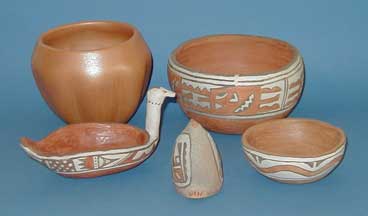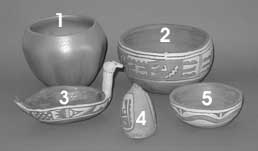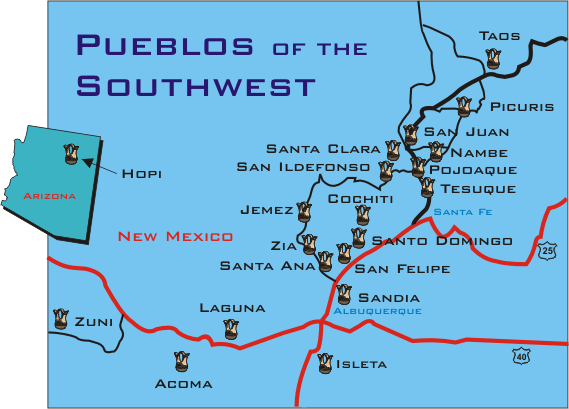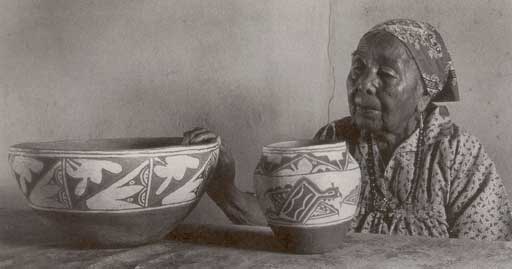 ClayHound Web
- Santa Ana Pueblo
ClayHound Web
- Santa Ana PuebloReturn to:
|
Santa Ana Pueblo Pottery |
|
|
|
|
|
|
|
|
|
|
|
Santa Ana Pueblo is located in north-central New Mexico. The divergence of Santa Ana vessels from the pottery of Zia was not apparent until after about 1720 when Ranchitos Polychrome became the first type to have unmistakable Santa Ana characteristics. The type often resembles San Pablo Polychrome from neighboring Zia, some of the jars having very short necks that are not decorated and bearing similar motifs and the mid body. Apparently, however, Ranchitos Polychrome never has isolated red arcs in the decoration as at Zia. The transition from red to black rim tops occurred about 1765, a conclusion that is based on evidence from sherds as Las Huertas. By about 1790, the style of Santa Ana decoration began to depart so strongly from that of Zia that recognition is usually easy even when the paste is not clearly visible. Especially characteristic are massive areas of red in the decoration, embellished by the inclusion of negative elements. These are unpainted areas within the red, usually in the shape of crescendo or semicircles. |
|
|
The Pueblo of Santa Ana has a long history of progress. In 1709, the pueblo purchased 5,000 acres along the Rio Grande to increase its agricultural production. The pueblo's 15,000 acre Spanish land grants and additional land purchases brought the reservation to its present size of 63,000 acres. Agricultural traditions from as early as the sixteenth century continue in the tribe's agricultural production. Although they now live in more modern villages, the potters of Santa Ana return to their old pueblo on the north bank of the Jémez River to collect red clay, which they temper with sand from the river. They slip their pots with white or buff, and paint them with simple old designs, mostly geometrics or abstract images of clouds, flowers, and sometimes turkey eyes. Santa Ana potters use a lot of red paint in decorating their pots, with or without the black outline customary at other pueblos. They paint the bases of their pots red as well as the insides of the rims, which they encircle with a thin band that often has a line break. They paint thick lines and strong shapes on the bulging part of the pot between the two. |
|
|
http://userpages.umbc.edu/~rkratz2/Santa_Ana_A.html |
|
|
|
|
|
|
|




